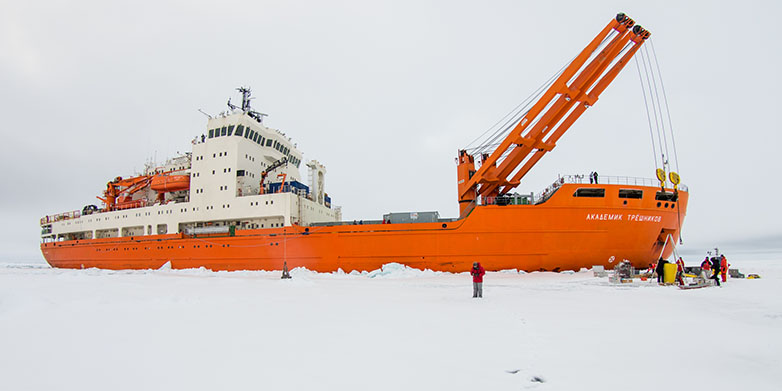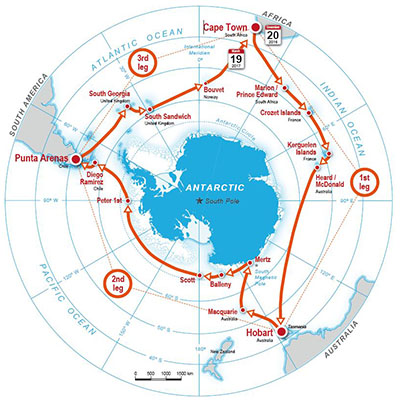Anchors aweigh and off to the Antarctic!
The research ship Akademik Treshnikov is due to set sail for Cape Town tomorrow, transporting researchers and equipment for a major Antarctic circumnavigation expedition. ETH Zurich is also on board.

Time to set sail: on 19 November, the Russian icebreaker Akademik Treshnikov will cast off from Bremerhaven. Its destination: Cape Town. Its aim: to transport people and equipment from the Swiss Polar Institute's international Antarctic Circumpolar Expedition (ACE) to South Africa. From here, the crew will set sail just before Christmas on a three-month expedition around the South Pole.
During the expedition, 55 scientists from 30 countries will work on 22 interdisciplinary research projects investigating various aspects of the Antarctic, from biology to climatology and oceanography.
The water cycle in focus at ETH
One of these projects will be led by ETH professor Heini Wernli. His doctoral students Iris Thurnherr and Pascal Graf will be on board, supported by a team on the ground in Zurich comprising Wernli, Franziska Aemisegger and Stephan Pfahl. “The success of our support also depends on whether and how we can communicate with them over satellite,” explains Wernli.
He and his research group would like to examine the Southern Ocean's water cycle in more detail. To do this, the ETH researchers on board will measure water isotopes in atmospheric water vapour and precipitation. These isotopes will help them determine the interaction between the ocean and atmosphere, as well as processes in the clouds and atmosphere when it rains.
During the expedition, Thurnherr and Graf will be responsible for monitoring the measuring instrument, which is housed in a container that the ETH researchers share with colleagues from the Paul Scherrer Institute (PSI). The device measures the isotopes contained in the water vapour of ambient air pumped into the container.
Night shifts for the precipitation sampling
Wernli’s doctoral students will also collect and archive rain samples. To do this, they must change the collecting vessel every ten minutes when it is raining – in some cases in the middle of the night and for hours. “That’s certainly going to cause us some sleepless nights,” says Pascal Graf.
They will also take water samples from lakes and waterways on the islands where the icebreaker drops anchor. All samples will be stored and analysed in the laboratory after the expedition.
In addition, the ETH researchers will examine the atmosphere with a radar. These measurements will provide them with information on the intensity and structure of the rainfall, for example the size of the rain drops. They will also be responsible for monitoring and servicing this instrument.
“The worst-case scenario would be if a measuring device was irreparably damaged,” says Thurnherr.
Around the South Pole in three legs

Iris Thurnherr will be on board during the journey from Bremerhaven to Cape Town and on legs one and two from Cape Town via Hobart to Punta Arenas in Chile’s southernmost tip. Pascal Graf will accompany his colleague on the ship to Cape Town, but will only rejoin the expedition in Punta Arenas to complete the third leg.
Another ETH representative – Alex Haumann, a postdoc in ETH professor Nicolas Gruber’s group – is also taking part in the expedition. Haumann is part of an EPFL project to investigate the ocean’s decreasing salinity. Haumann will join the team in Punta Arenas for the third leg of the expedition.
The three ETH researchers will be reporting on their research trip in the Zukunftsblog from 20 December 2016, the expedition’s official start date. Their images will be posted on the ETH Zurich external pageInstagramcall_made page and on external pageFacebookcall_made.
